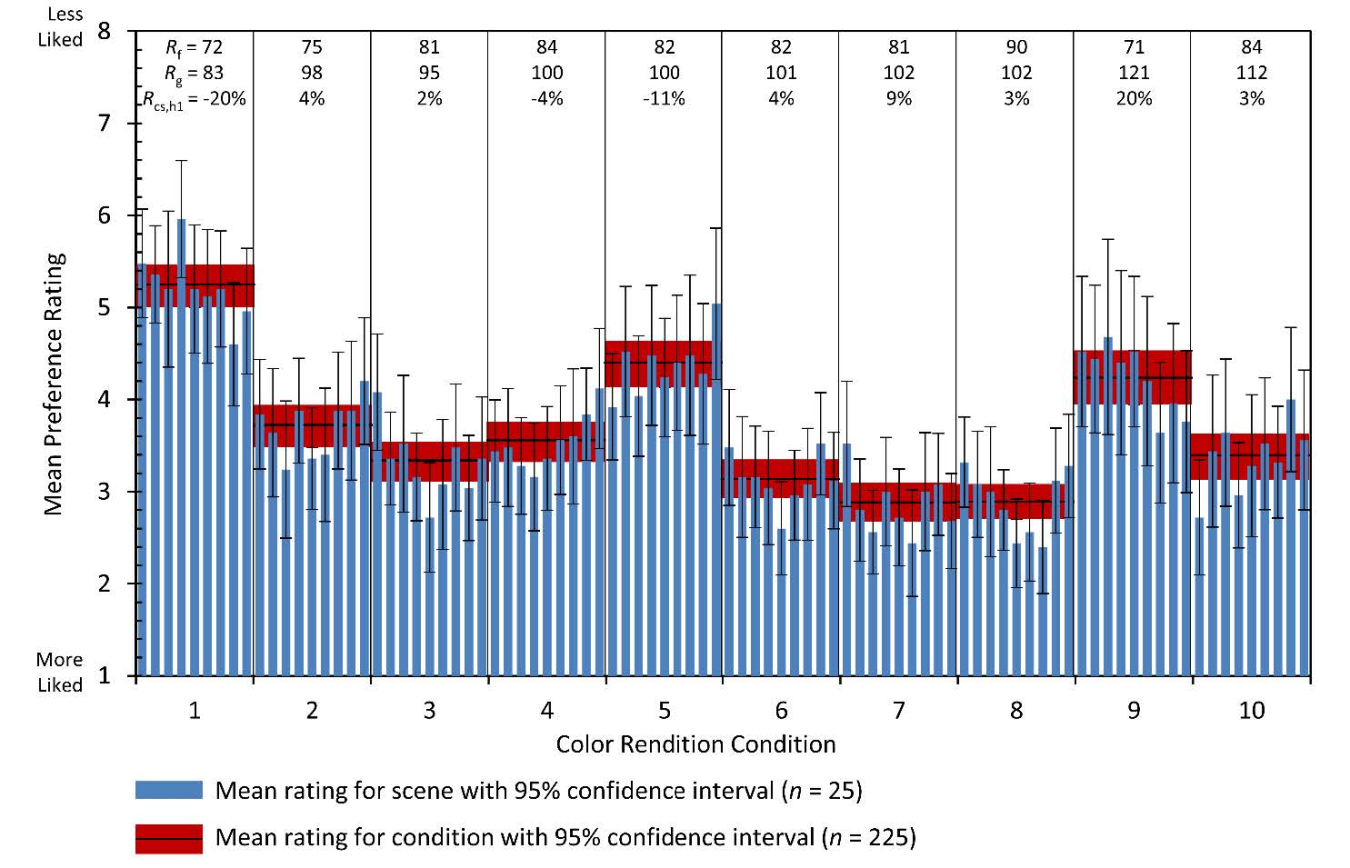PNNL released the results of a DOE-funded study, published in Lighting Research & Technology, that validates color preference specification criteria..
October 18, 2019Pacific Northwest National Laboratory (PNNL) released the results of a U.S. Department of Energy-funded study, published in Lighting Research & Technology, that validates color preference specification criteria based on American National Standard Institute and Illuminating Engineering Society TM-30-18. The results support TM-30 Annex E (in press) recommendations that allow lighting professionals to communicate different color rendition goals (preference, vividness, and fidelity) with far greater precision than prior methods.
In the new study – the third in a PNNL series – 90 lighting conditions with systematically varied color rendition and chromaticity were evaluated by 25 participants who provided ratings for normalness, saturation, preference, and acceptability. The lighting conditions were designed to test the bounds of previously proposed color preference criteria, while also verifying their applicability across different correlated color temperature and Duv values. In keeping with the preceding work, there were substantial differences in ratings based on color rendition, but minimal differences based on chromaticity. This supports the use of color rendition specification criteria that are independent of chromaticity (within the range of nominally white light).
While considerable effort has been made to understand correlations between subjective evaluations of color quality (i.e., color preference, color naturalness, color vividness, color acceptability) and the metrics used to characterize light sources, little attention has been given to establishing new color rendition specification criteria, which are the primary way color quality is addressed in practical applications.
The new TM-30 Annex E criteria will be a valuable tool for improving lighting quality and balancing the tradeoff between color rendition and energy efficiency.

Mean preference rating for 90 scenes grouped by color rendition condition. Conditions 3-7 and 10 have roughly equal color fidelity but were not equally preferred, demonstrating the value of using 3 metrics rather than just color fidelity. Courtesy of PNNL
The U.S. Department of Energy’s Lighting Research and Development program conducts research to measure subjective evaluations and preferences for different color rendition conditions, with a goal of providing lighting manufacturers and specifiers with more complete information to effectively balance color quality and energy efficiency in a variety of lighting applications. Learn more.

